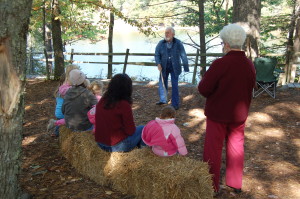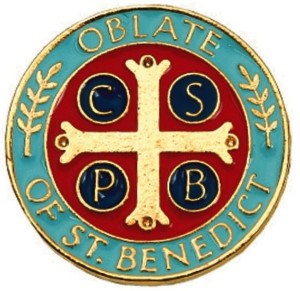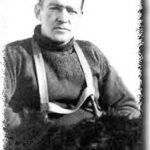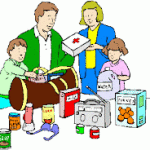 September’s oblate formation class was titled “Upon This Tradition and Spirituality of Leadership.” The title sounded daunting; the course consisted of storytelling. Three sisters and the prioress shared the stories of:
September’s oblate formation class was titled “Upon This Tradition and Spirituality of Leadership.” The title sounded daunting; the course consisted of storytelling. Three sisters and the prioress shared the stories of:
- Benedict and Scholastica
- the two sisters and one oblate who came to America from Germany, and established a priory in Pennsylvania
- how the work moved them to Minnesota, and the growth there
- the founding of St. Paul’s Monastery
- the effects of Vatican II
- the sisters’ own personal stories of coming to and living as a Benedictine (these were the most memorable stories)
Lessons Learned
Hearing the stories was not dissimilar to stories one might hear at a church planting conference. Since those first three women came to America, there has always been path of providing education. However, as they live out the gospel, the ministry paths of the sisters has always been driven by the needs of the community in which they were located. German immigrants to America needed teachers, so the sisters came and taught and built schools. That particular ministry continues, but they have also added several forms of family care, spiritual formation, and creation care. They are purpose and prayer driven, not ministry driven, and a community within and a part of the larger society. All good lessons for a church, and the same path our friends in Red Rock Village are pursuing.
 Another insight came from their view of leadership, which was illustrated as a wheel. The hub is Christ. All the spokes are leaders, who are needed to keep the shape and wheel turning. Everyone is plugged into Christ. There is also a secondary rim around the hub, which would be the prior/prioress/abbot/abbess or in my case, pastor. That person is the human leader coordinating the leaders, not their mediator to Christ.
Another insight came from their view of leadership, which was illustrated as a wheel. The hub is Christ. All the spokes are leaders, who are needed to keep the shape and wheel turning. Everyone is plugged into Christ. There is also a secondary rim around the hub, which would be the prior/prioress/abbot/abbess or in my case, pastor. That person is the human leader coordinating the leaders, not their mediator to Christ.
 The next step is Oblate Candidate Enrollment at an evening prayer service. It is here we will move from being seekers to oblate candidates, receive a copy of The Rule from the prioress, and each meet our assigned mentor sister.
The next step is Oblate Candidate Enrollment at an evening prayer service. It is here we will move from being seekers to oblate candidates, receive a copy of The Rule from the prioress, and each meet our assigned mentor sister.
The One Downer (one more lesson)
I debated whether or not to include this part of the post (and initially I didn’t). I’ve decided to put in because I’ve focused this post on lessons for The Church, so this is not meant to put down the sisters, Benedictines, or monastic traditions overall.
I wonder if is there a need for a reinvention of the whole monastic system. I don’t know if these sisters are typical, but my gut tells me they are. The sisters are getting older, and there are no new novices coming in. Just as the Roman Catholic priesthood will likely one day, if not soon, embrace priests marrying in order to have enough priests, I can see monastic orders having to make changes to their communities. I think the oblate process is part of that. There are just under 200 oblates of St. Paul’s Monastery, with a new class every year, while the number of sisters is around 40, with, I believe, many of those in nursing care, and, as I said, no new novices coming up the pipe.
It made me sad that these godly and purpose driven women are part of what appears to be a dying system. While I’m all for maximum commitment of members, the church structures can’t become so antiquated, nor, IMO, can we maintain rules that go beyond scripture making the yoke of Jesus not easy nor his burden light, that we fade away in a generation. (Membership discussions and vote are coming up at the next Wesleyan GenCon).
Action Plan/Goals
- Work to discern if I distinguish or integrate: life, vocation, and calling.
- Evaluate if my ministries, both personal and as a church, are purpose and prayer driven working within the community.
- Is my church growing by making new disciples in the next generations or are we stagnate? And what will I do about it?
The next step is Oblate Candidate Enrollment.
photo credit: DO – Apple Day Appalachian Storytelling (Ramsey) via photopin (license)






